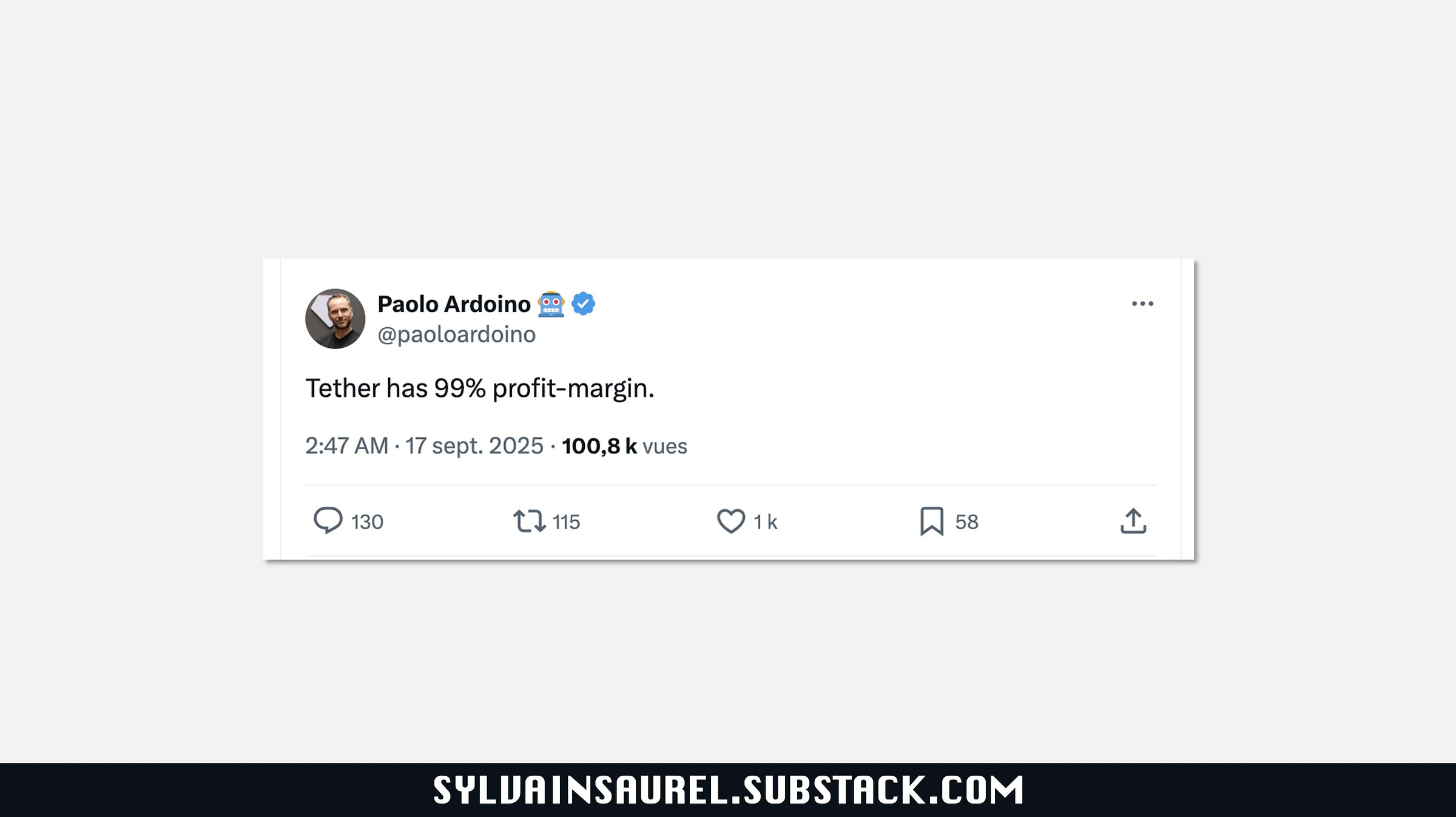Tether's 99% Margin: How Crypto's Beating Heart Became Its Original Sin.
We have replaced the bank, but we have replicated its most parasitic function and amplified it to an almost comical degree.
A single tweet, a boast of financial prowess, has inadvertently laid bare the deep, philosophical chasm running through the heart of the cryptocurrency landscape. Paolo Ardoino, the CTO of Tether, recently declared that the company behind USDT, the world’s largest stablecoin, operates at a staggering 99% profit margin. In the cutthroat world of traditio…
Keep reading with a 7-day free trial
Subscribe to Sylvain Saurel’s Newsletter to keep reading this post and get 7 days of free access to the full post archives.


